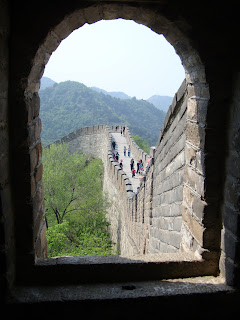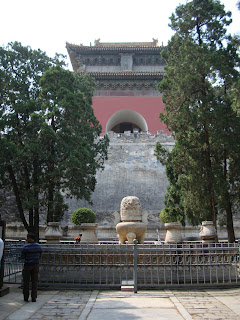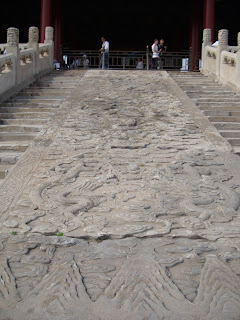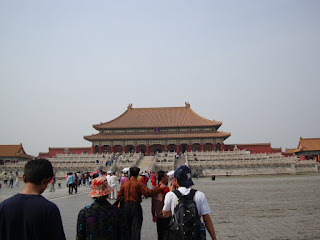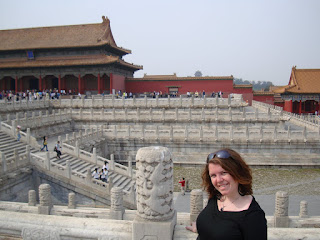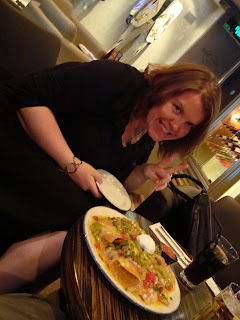 -
--
-
-
-
-
-
-
-
-
-
-
-
-
We had a few hours on Wednesday morning before our afternoon flight back to Japan, so we decided to visit Chairman Mao's Mausoleum. Photography is forbidden inside the mausoleum, and the guards were quite serious about this. Joe and I had to take turns going in because we weren't even allowed to bring our camera in (no large bags are allowed either). We each had to wait in a line outisde for about 10 minutes, show identification, and pass through metal detectors before entering the courtyard infront of the mausoleum. From there we had to wait in another line for about 10 more minutes before entering the building. Upon entry everyone must take off their hat, and a policy of silence is strictly enforced. The first hall includes a large marble statue of Mao, seated on a chair with a landscape of mountains and rivers behind him. The sculpture is surrounded by hundreds of potted plants, and there is a designated place in front of the sculpture for flowers, which are sold outside of the mausoleum. Visitors then pass through a hallway and into the room with Mao himself. After his death in 1976 Mao was embalmed, but rumor has it that his doctors did a poor job and needed the Vietnamese to fix the corpse. Other rumors say that there is a wax copy that sometimes replaces the body. In any case, Mao is in a clear coffin, draped with a red flag and behind a second layer of glass, surounded by potted lilies. He doesn't look too good these days.... Visitors are not allowed to stop in the room, guards make sure that everyone keeps moving. After passing through the room with Mao visitors walk through one final room, this one containing gift shops selling every manner of Mao memoribilia, including objects that are close approximations to religious funerary goods. I thought it was interesting to note the crowd at the mausoleum- for all the throngs of foreigners throughout Beijing, Mao was mostly visited by Chinese people, and many of the visitors appeared to be migrant laborers or other economically disadvantaged people, a demographic not found at other Beijing sights. I was also surprised to see so many young people there to pay homage to the Chairman.
-
With our remaining time we decided to tour the Gate of Heavenly Peace.
-
 -
--
-
-
-
-
-
-
-
-
-
-
-
-
It was from this spot that Mao declared the founding of the People's Republic of China in 1949.
-
 -
--
-
-
-
-
-
-
-
-
-
-
-
-
Up on the gate...
-
 -
--
-
-
-
-
-
-
-
-
-
-
-
-
-
-
-
-
Military guys taking photos in front of the gate.
-
 -
--
-
-
-
-
-
-
-
-
-
-
-
-
Joe waits for the subway....
-
 -
--
-
-
-
-
-
-
-
-
-
-
-
-
-
Vegetables for sale back in the hutong.
-

-
-
-
-
-
-
-
-
-
-
-
-
-
One last view of the courtyard of our hotel, so relaxing....
-

-
-
-
-
-
-
-
-
-
-
-
-
-
We stopped for lunch at the airport. Joe got his favorite bottled water. When we lived in Lawrence he would always return from business trips to China with one of these bottles.
-

-
-
-
-
-
-
-
-
-
-
-
-
-
Thai food!
-

-
-
-
-
-
Beijing was a cosmopolitan and hip city, and we had a great five days there, visiting friends, seeing the sights, and enjoying fantastic food. After Joe's many trips to Hong Kong and Shenzhen, and our three week tour of Shanghai, Luoyang, Xi'an and Guilin back in 2006, it was great to finally see the capital to round out our understanding of China.





